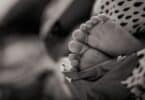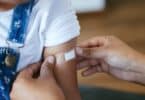Sudden Infant Death Syndrome has been a mystery to doctors and researchers for years. Every few months new recommendations are presented to parents to further reduce their baby’s chance of dying suddenly while they sleep.
A new study has found that newborn hearing tests may hold the key to predicting which babies are at risk of Sudden Infant Death Syndrome (SIDS).
The study, published in the July issue of Early Human Development found all babies in a Rhode Island study group who died of SIDS shared the same distinctive difference in their newborn hearing test results for the right inner ear, when compared with infants who did not have SIDS.
The study was conducted by Dr. Daniel D. Rubens of Children’s Hospital and Regional Medical Center in Seattle.
It is the first time doctors might be able to identify newborns at risk for SIDS by a simple, affordable and routine hearing test administered shortly after birth.
In the study, medical records and hearing tests of 31 babies who died from SIDS in Rhode Island were examined and compared with healthy babies. Rhode Island has a particularly robust database of newborn hearing test data.
The cause of SIDS, known around the world as “crib death” and “cot death,” has eluded physicians and grieving parents for centuries. Responsible for many previously unexplainable deaths of infants usually two to four months old and striking boys more than girls, SIDS causes tragic, sudden death in approximately 1 in 1,000 newborns worldwide, making it the largest cause of death in young infants.
In the United States approximately 3,600 deaths each year were attributed to SIDS from 1992-1999, according to an April, 2004 article in Archives of Pediatric and Adolescent Medicine. Death occurs during sleep, seemingly with no warning and no previous symptoms.
Changes in infant care have been promoted including the “Back to Sleep” program discouraging sleeping on the stomach, and avoiding exposure to cigarette smoke. Various causes have been suggested, including disturbances in respiratory control and infant overheating, but to date nothing has proven conclusive.
It is known that the inner ear contains tiny hairs that are involved in both hearing and vestibular function. Rubens proposes that vestibular hair cells are important in transmitting information to the brain regarding carbon dioxide levels in the blood.
He postulates that injury to these cells will disrupt respiratory control, playing a critical role in predisposing infants to SIDS.
The SIDS infants in Rubens’ study showed a consistent four point lower score in their standard newborn hearing tests, across three different sound frequencies in the right ear, when compared to babies that didn’t die from SIDS.
Additionally, healthy infants typically test stronger in the right ear than the left. However, in each of the SIDS cases studied, the right ear tested lower than the left, reversing the test results of healthy babies.
“This discovery opens a whole new line of inquiry into SIDS research,” said Rubens. “For the first time, it’s now possible that with a simple, standard hearing test babies could be identified as at risk for SIDS, allowing preventative measures to be implemented in advance of a tragic event.”
“We must now fully explore all aspects of inner ear function and SIDS, and analyze testing frequencies higher than those currently tested by newborn hearing screen centers,” he said.
SOURCE






